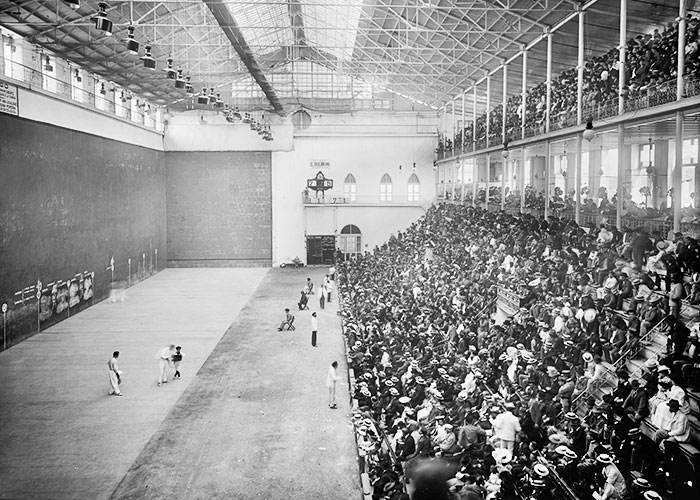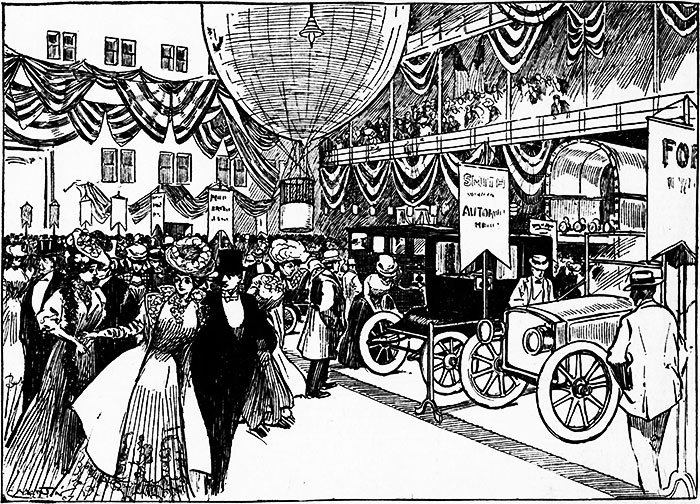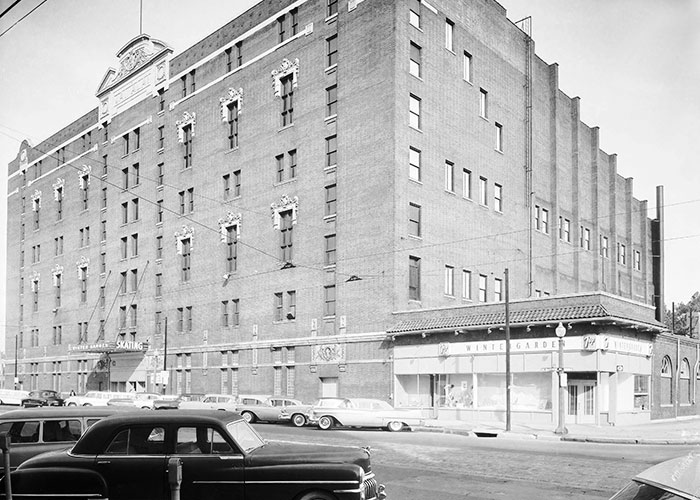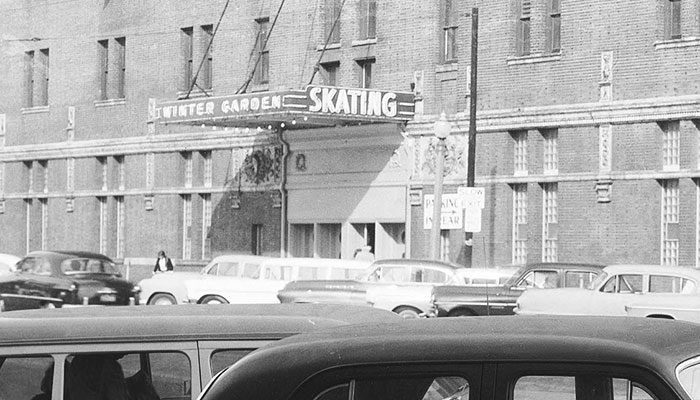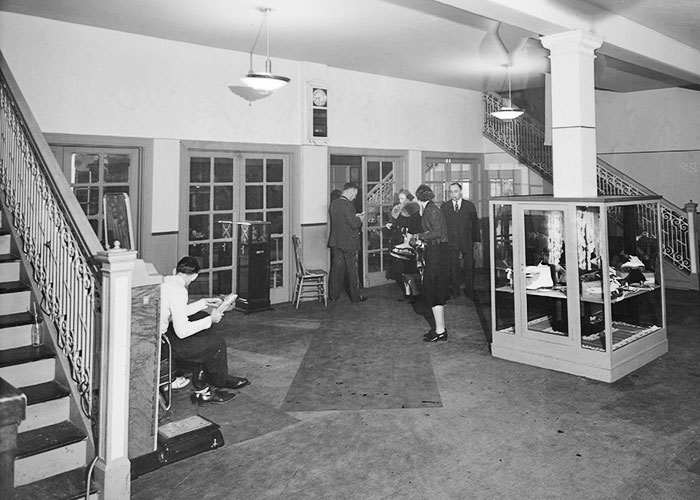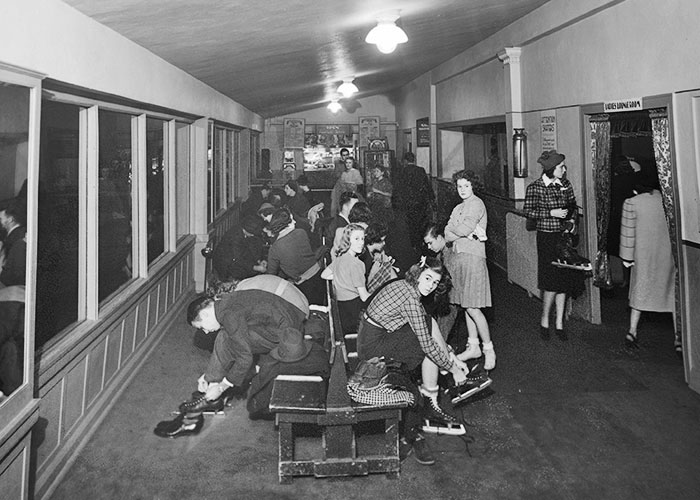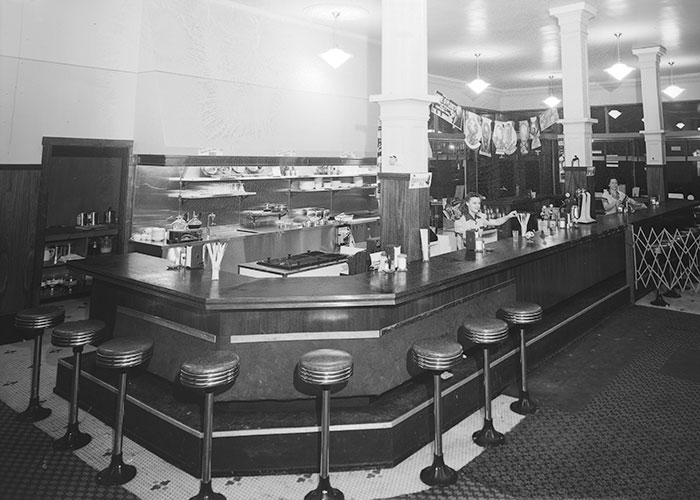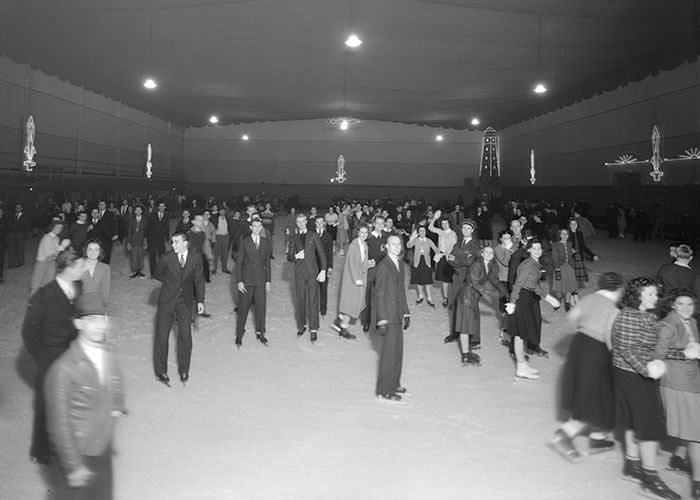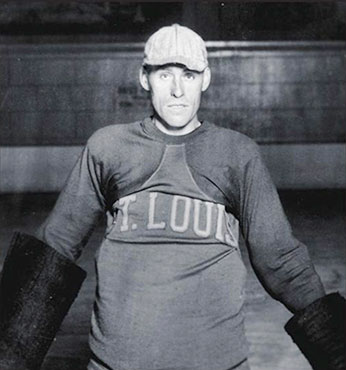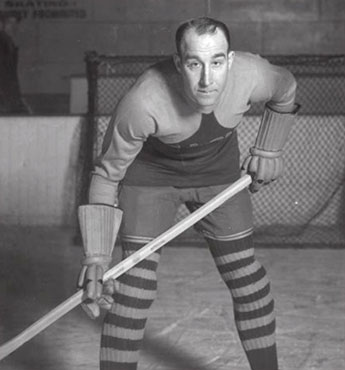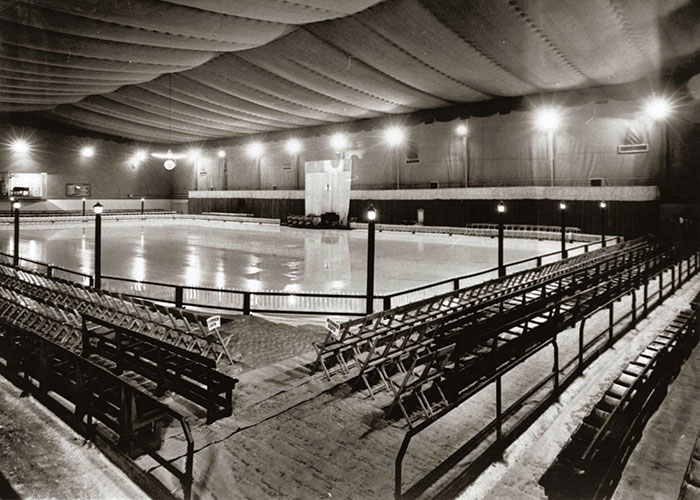|
Winter Garden Jai alai, a sport that originated in Spain's Basque region, was brought to Cuba by the Basques in 1898. Cuba's first jai alai arena opened in Havana in May of 1901. On May 15, 1904, the Cuban Jai Alai Ball Company opened a 10-story jai alai arena in St. Louis at the corner of DeBaliviere and Kingsbury, near the main entrance to the World's Fair. The jai alai court occupied the east one third of the 250 foot by 150 foot building. Up to 6,500 spectators could be seated in the west two thirds of the Jai Alai Building.
Jai alai was played in the Jai Alai Building for just over two months. The last game was played on July 24. The games were scheduled to resume on November 1, but the foreign born players never returned. Speculation was that the sport didn't succeed in St. Louis because gambling wasn't allowed. However, the Cuban promoters claimed that while spectators could bet on the games in their country, it had never been their intention to introduce betting in St. Louis. Over the next eleven years, the Jai Alai Building served as a multipurpose venue. Starting early in 1905, the building was the site of professional boxing matches and amature athletic meets. In October of 1905, the space was converted into a roller skating rink ― the second largest in the country. In April of 1907, the Jai Alai Building hosted the first annual St. Louis automobile show, with luxury automobiles, pretty women and men in evening attire. In May, the second annual dog show was held under the auspices of the Mississippi Valley Kennel Club. The West End market opened in the Jai Alai Building in May of 1915. The building housed some 75 stalls selling meat, vegetables, poultry, fruit, coffee and tea, flowers, fish, and bakery and delicatessen goods. But the market failed to catch on and closed at the end of the summer.
In April of 1916, the Cuban Jai Alai Ball Company sold the Jai Alai Building to the Eddy Realty and Investment Company. It was initially announced that the structure would be converted into an opera house and theater. But later that year, Eddy transferred ownership of the building to the Winter Garden and Ice Company for the purpose of operating an ice skating rink. In addition to converting the Jai Alai Building to an ice skating rink, the new owners built a 150-ton ice manufacturing plant and a 5000-ton ice storage plant on property at the rear of the building.
Thus, the Jai Alai Building became the Winter Garden.
The interior of the building built for jai alai was completely remodeled. The entire floor was torn up and the box seats were torn out, increasing the floor space and affording a skating surface of 111 feet by 205 feet. The rink had a capacity for 2,000 skaters and 1,000 spectators. The lobby was outfitted with soft carpet and thickly upholstered chairs and settees. On each side of the lobby, a carpeted promenade extended the full length of the building, parallel to the skating surface. The promenade was separated from the rink by glass partitions, which allowed spectators to sit in warmth and watch the skaters. There was a ladies’ restroom and a men's smoking room off the promenade. A cafe was at the south end of the building. No intoxicants were served.
The admission charge was 50 cents, which included skates, checkroom and all privileges. The admission price for children, who had separate skate sessions on Saturday mornings, was 25 cents. Opening night for the new Winter Garden rink was November 25, 1916. However, due to a mechanical failure, there was not enough ice for skating. But the crowd enjoyed themselves anyway, touring the new facility without having to part with their 50-cent pieces. The 23,000 square foot rink was draped overhead with brightly colored cloths. Brilliant lamps lit the space. At times, the lights would be dimmed for a feature called "moonlight," with only a sparkly moon overhead in the center of the rink. Early on, a live orchestra furnished music. Later, an organ energized the skaters. The Winter Garden was a center of social activity. On weekends, the rink attracted up to 1,400 skaters. St. Louis "society" skated there, including Gaston DuBois of Monsanto, Ben Wells of 7-Up, Walter Powell of Brown Shoe and the Forshaws.
In 1920, the Polar Wave Ice and Fuel Company, owned by the Muckerman family, purchased the Winter Garden from the Winter Garden and Ice Company. The new owners continued to operate both the skating rink and the ice plant. * * * * * By the late 1920s, minor league professional hockey was in its infancy. In 1926, the first four minor leagues were formed, including the American Hockey Association. Two years later, St. Louis was ready to get involved. On August 25, 1928, Frank D. McDonald, a newspaper executive with the St. Louis Star and Times, announced that he and Winter Garden manager, Earl Reflow, had taken over the league rights to the Winnipeg club and would serve as owners of a St. Louis franchise. The only facility available for the St. Louis team to play in was the Winter Garden, which the new franchise owners leased for a term of 10 years. But much work was needed to make the building spectator friendly, as it was not a typical hockey arena. In order to accommodate seating on the west and south sides, the rink was shortened to 192 feet by 82 feet, nearly regulation size today. When the work was completed, there was seating for more than 5,000 fans. Five St. Louis players hit the Winter Garden ice for the first official practice on November 5, 1928. In addition to the St. Louis squad, the Kansas City Pla-Mors, also members of the AHA, and the NHL's Chicago Blackhawks also practiced on the Winter Garden ice. On November 27, 1928, the St. Louis team, which had yet to adopt a nickname, played its first regular game against the Minneapolis Millers. Approximately 4,500 fans crammed into the Winter Garden to witness the historic sports moment. They were not disappointed as the St. Louisans won the contest by a score of 3 to 2.
It wasn't until nine games into the season that the St. Louis team had an official nickname. A contest was held and the name "Flyers" was chosen from among the more than fifty entries. The St. Louis Flyers continued play in the Winter Garden until the end of 1931. On December 26 of that year, the Flyers began playing their games in the St. Louis Arena, with its much larger seating capacity. * * * * * In August of 1946, the Muckerman family sold the Winter Garden to the Dickmann Real Estate Company. The following year, the property was transferred to the Jai-Alai Realty Corporation and leased for 10 years to Ruth English, a former figure skating star. In the 1950s, the Winter Garden sat at the north end of what was called the DeBaliviere Strip. Skaters had many dining options to choose from, before or after their ice time, including The Goody Train at 406, the Mural Room at 401, Sorrento's at 341, The Parkmoor at 324 and Garavelli's at 301.
In May of 1963, it was announced that the Winter Garden would be razed to make way for a shopping center. According to its owners, the building was too old and the area was changing. Plus, the Winter Garden had lost customers to the Mark C. Steinberg rink in Forest Park and the Clayton rink in Shaw Park. The Winter Garden closed its doors for ice skating on April 1, 1964. Demolition began the following month.
Copyright © 2022 LostSTL.com |

